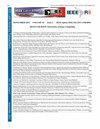Economical Assessment of Industrial Motor Replacement from the Perspective of Life Cycle Cost Analysis
IF 1.3
4区 工程技术
Q3 COMPUTER SCIENCE, INFORMATION SYSTEMS
引用次数: 0
Abstract
The increasing concern about climate change has underpinned global efforts toward the reduction of greenhouse gas emissions (GHGs). In this sense, energy efficiency actions (EEAs) are interesting solutions that have been expanding over the years in the industrial sector. Replacing low-efficiency electric motors with high-efficiency counterparts is a ubiquitous action in this sense. However, they still have a high cost, making it necessary to perform a proper technical-economic analysis to determine the feasibility of the action. For this purpose, life cycle cost analysis (LCCA) has proven to be an excellent alternative for economic viability verification of EEAs because this methodology takes into account expenses throughout the entire life cycle of the project or equipment. Considering decision-making involving optimization, this work proposes a methodology to calculate the present residual value at the end of the life cycle, considering the service time of motors and the chosen study period for the project. Two case studies involving predicted theoretical situations are simulated, and the impact of service time on the replacement of a 50-CV, four-pole motor and, 40-CV in a local industry is assessed. It is observed that Net Savings are affected by the study period when replacement occurs in terms of a low-power high-efficiency motor since such action can lead to different service times. Overall, the improved LCC applied to induction motors replacement proves to be a good method for predicting the residual value, whereas the results show that different service times are necessary to maximize net savings and the residual cost in the same case.求助全文
约1分钟内获得全文
求助全文
来源期刊

IEEE Latin America Transactions
COMPUTER SCIENCE, INFORMATION SYSTEMS-ENGINEERING, ELECTRICAL & ELECTRONIC
CiteScore
3.50
自引率
7.70%
发文量
192
审稿时长
3-8 weeks
期刊介绍:
IEEE Latin America Transactions (IEEE LATAM) is an interdisciplinary journal focused on the dissemination of original and quality research papers / review articles in Spanish and Portuguese of emerging topics in three main areas: Computing, Electric Energy and Electronics. Some of the sub-areas of the journal are, but not limited to: Automatic control, communications, instrumentation, artificial intelligence, power and industrial electronics, fault diagnosis and detection, transportation electrification, internet of things, electrical machines, circuits and systems, biomedicine and biomedical / haptic applications, secure communications, robotics, sensors and actuators, computer networks, smart grids, among others.
 求助内容:
求助内容: 应助结果提醒方式:
应助结果提醒方式:


